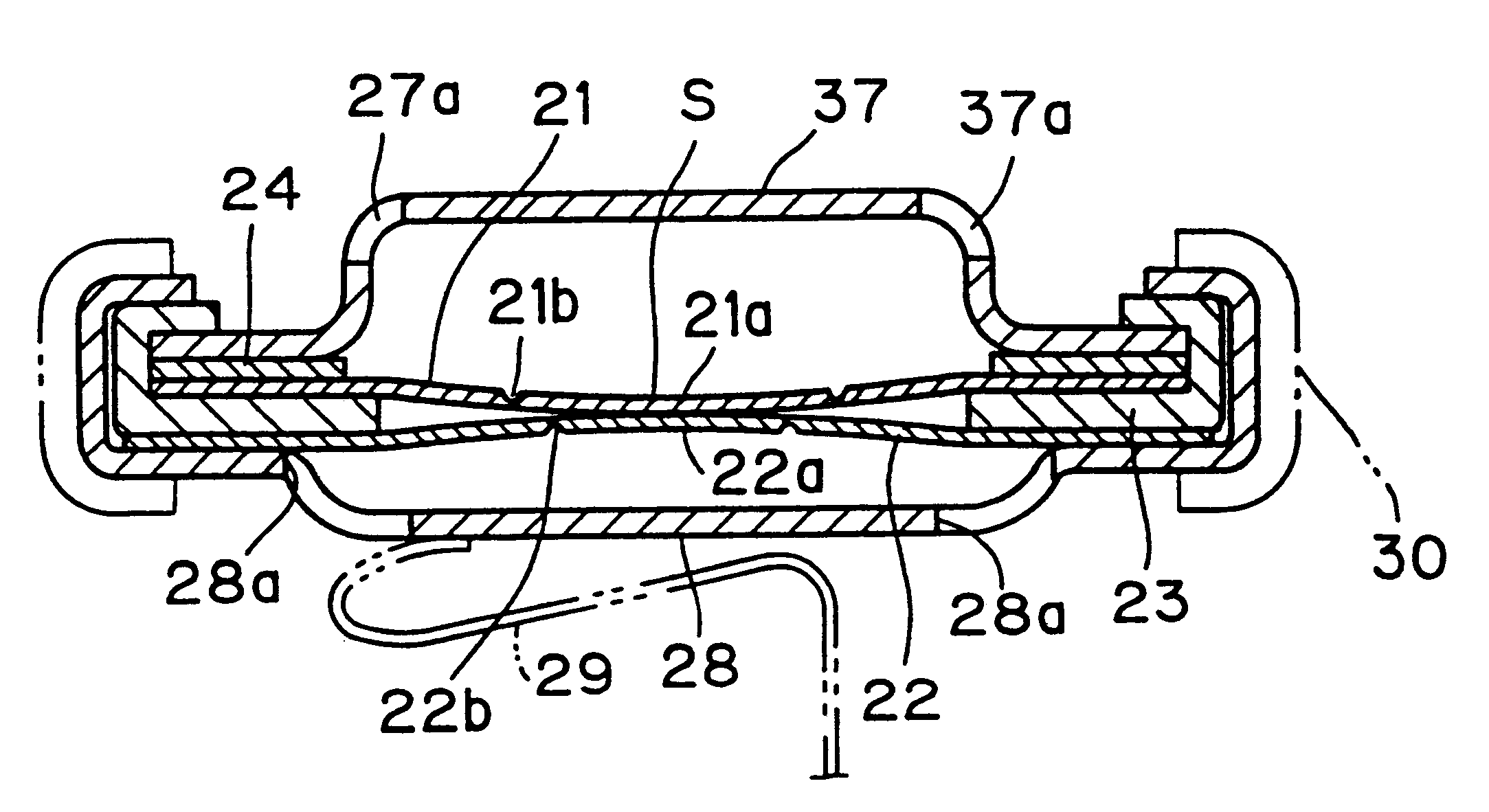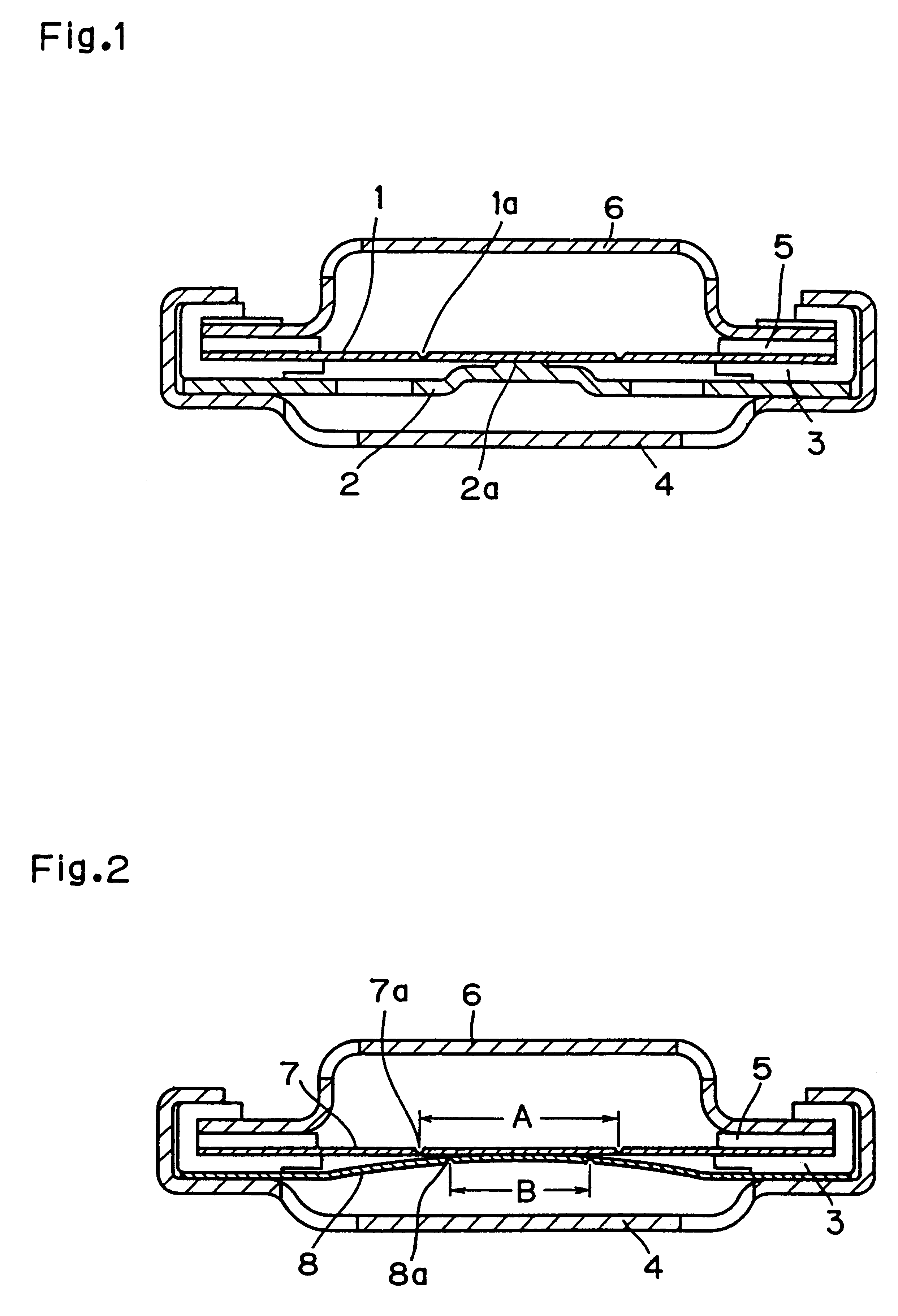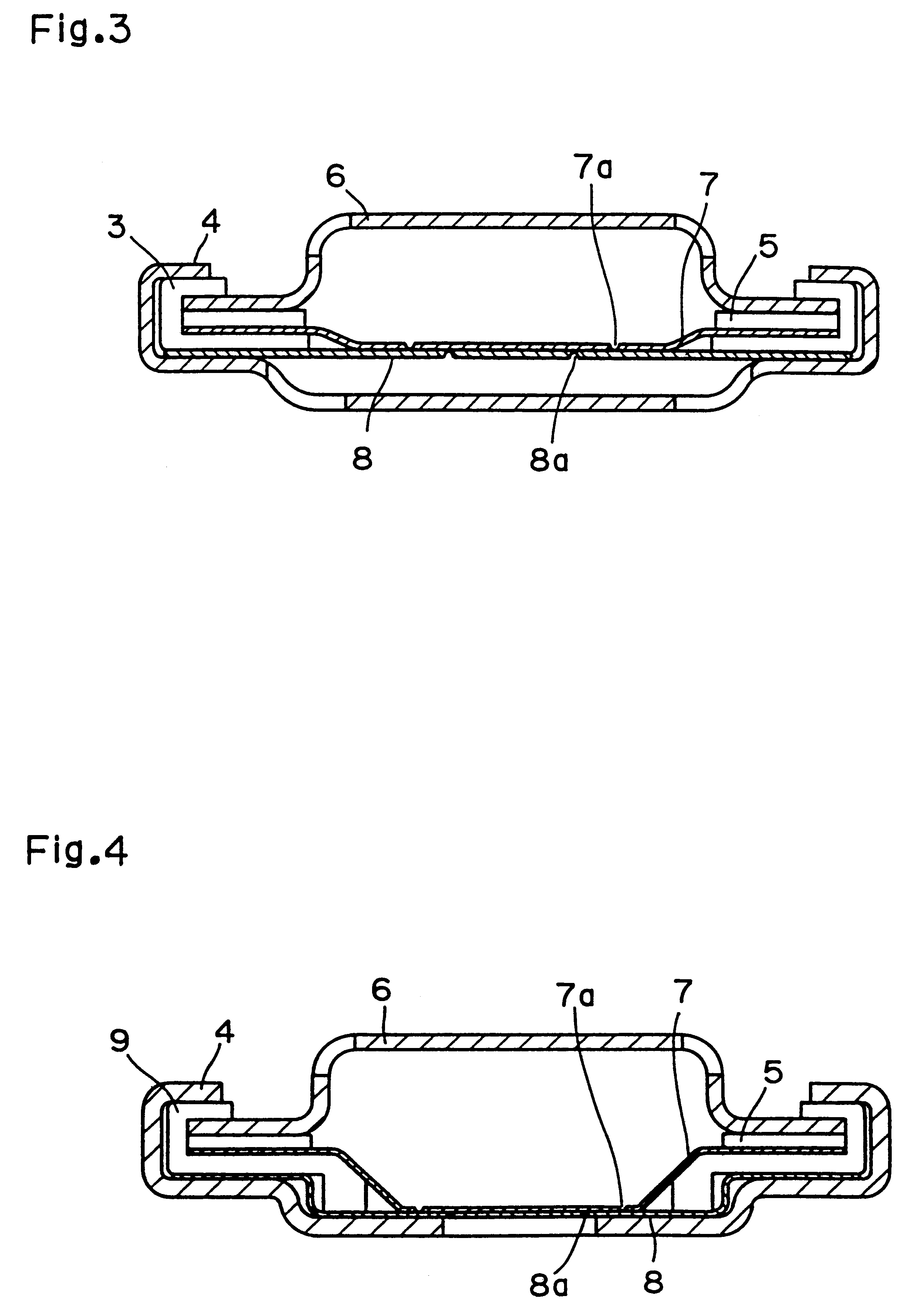Explosion-proof seal plate for enclosed type cell and production method thereof
a technology of enclosed type cells and seal plates, which is applied in the direction of cell components, electrical equipment, cell component details, etc., can solve the problems of large dispersion of weld strength, inability to set to a fixed value, and excessive pressure inside the cell,
- Summary
- Abstract
- Description
- Claims
- Application Information
AI Technical Summary
Benefits of technology
Problems solved by technology
Method used
Image
Examples
first exemplary embodiment
FIG. 1 shows the construction of a seal plate in accordance with the first exemplary embodiment of the present invention, wherein a thin portion 1a is provided in the central portion of an upper metallic foil 1 made of aluminum with a thickness of 0.15 mm and a diameter of 12.7 mm using a C-shaped stamping die having a diameter of 4.0 mm, a protrusion 2a with a diameter of 1.0 mm is provided in the center of a lower metallic foil 2 made of aluminum with a thickness of 0.3 mm and a diameter of 13.5 mm and having 4 vent holes of 1.5 mm diameter, and the two metallic foils were welded by ultrasonic welding at the central portion of the upper metallic foil 1 and the protrusion 2a of the lower metallic foil 2 with an insulating gasket 3 interposed. They were then encased in a metallic case 4 made of aluminum and having 4 vent holes of 1.5 mm diameter, a temperature dependent resistor 5 and a metallic cap 6 having 4 vent holes of 1.5 mm diameter were placed on top of it, and then the peri...
second exemplary embodiment
FIG. 2 shows the construction of a seal plate in accordance with the second exemplary embodiment of the present invention, wherein a thin portion 7a is provided in the central portion of an upper metallic foil 7 made of aluminum with a thickness of 0.10 mm and a diameter of 12.7 mm using a C-shaped stamping die having a diameter of 4.0 mm, a thin portion 8a is provided on a lower metallic foil 8 made of aluminum with a thickness of 0.10 mm and a diameter of 13.5 mm and having 4 vent holes of 1.5 mm diameter using an O-shaped stamping die having a diameter of 2.5 mm, and the two metallic foils were welded by ultrasonic welding at the central portions of the two metallic foils with an insulating gasket 3 interposed. Here the breaking strength of the thin portion 8a of the lower metallic foil 8 was 10-13 kg / cm.sup.2 while the breaking strength of the thin portion 7a of the upper metallic foil 7 was 18-24 kg / cm.sup.2. They were then encased in a metallic case 4 made of aluminum and havi...
third exemplary embodiment
FIG. 3 shows the construction of a seal plate in accordance with the third exemplary embodiment of the present invention, wherein a thin portion 7a is provided in the central portion of an upper metallic foil 7 made of aluminum with a thickness of 0.10 mm and a diameter of 12.7 mm by using a C-shaped stamping die having a diameter of 4.0 mm, the central portion of the upper metallic foil 7 is made lower by 0.5 mm below its peripheral in the form of a reversed trapezoid, a thin portion 8a is provided on a lower metallic foil 8 made of aluminum with a thickness of 0.10 mm and a diameter of 13.5 mm and having 4 vent holes of 1.5 mm diameter using an O-shaped stamping die having a diameter of 2.5 mm, an insulating gasket 3 was interposed between the peripheries of the two metallic foils, and the central portion in the form of a reversed trapezoid of the upper metallic foil 7 and the central portion of the lower metallic foil were welded. They were then encased in a metallic case 4 made ...
PUM
| Property | Measurement | Unit |
|---|---|---|
| diameter | aaaaa | aaaaa |
| thickness | aaaaa | aaaaa |
| thickness | aaaaa | aaaaa |
Abstract
Description
Claims
Application Information
 Login to View More
Login to View More - R&D
- Intellectual Property
- Life Sciences
- Materials
- Tech Scout
- Unparalleled Data Quality
- Higher Quality Content
- 60% Fewer Hallucinations
Browse by: Latest US Patents, China's latest patents, Technical Efficacy Thesaurus, Application Domain, Technology Topic, Popular Technical Reports.
© 2025 PatSnap. All rights reserved.Legal|Privacy policy|Modern Slavery Act Transparency Statement|Sitemap|About US| Contact US: help@patsnap.com



